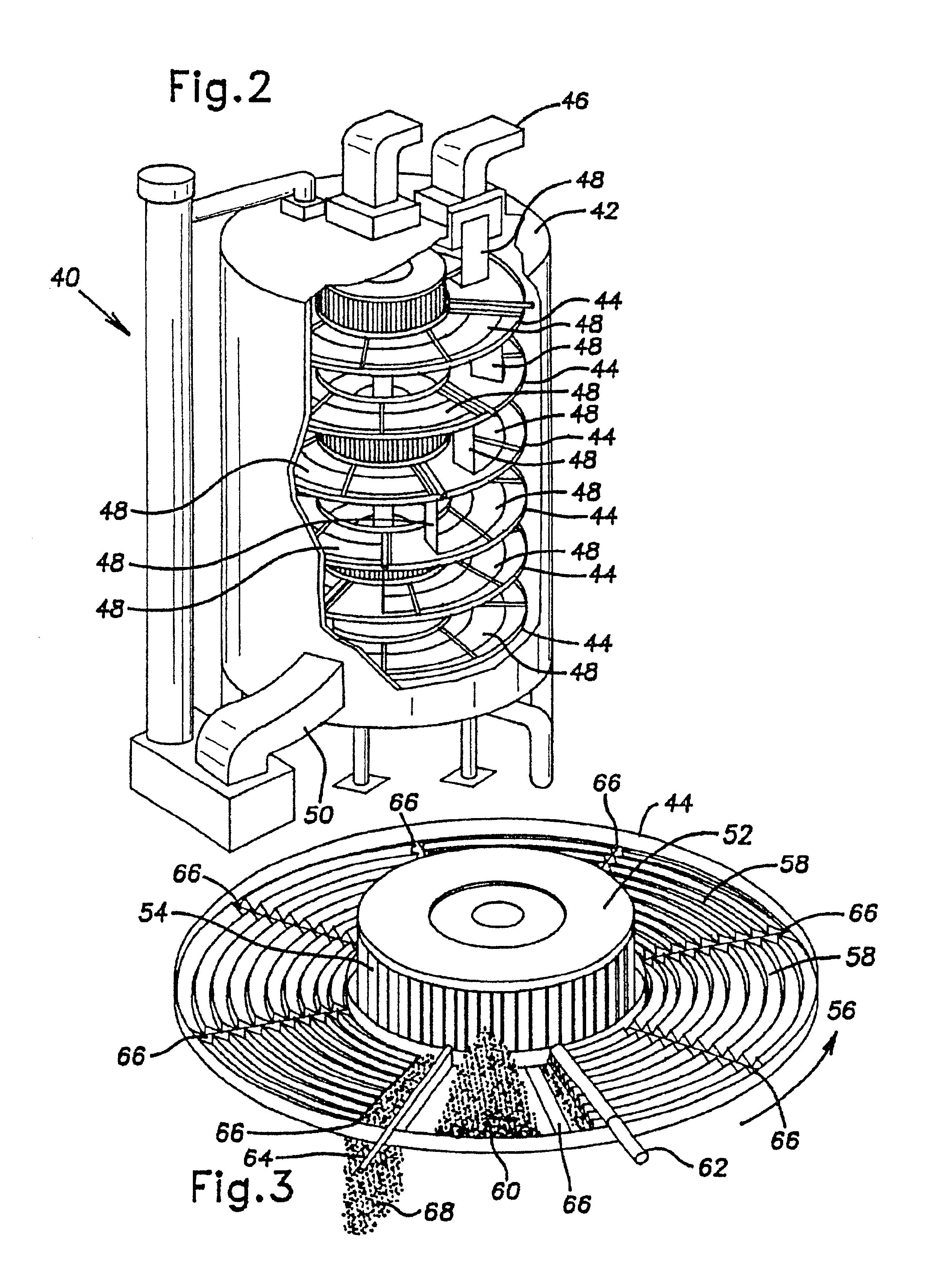Bead and process for removing dissolved metal contaminants
a technology of dissolved metal contaminants and beads, applied in the field of beads, can solve the problems of incomplete metal removal, toxic metal ions and valuable ones, high reagent and energy requirements, etc., and achieve the effect of effectively cross-linked binder and effective immobilization
- Summary
- Abstract
- Description
- Claims
- Application Information
AI Technical Summary
Benefits of technology
Problems solved by technology
Method used
Image
Examples
example 1
Sorbent beads were made with powdered activated carbon, poly(acrylic acid) S. (PAC), and glycerol, formed in a pin mixer and baked in a convection oven. The resulting beads were (by weight) 79% PAC, 19% Poly(acrylic acid), 1% glycerol, and 1% moisture. The beads were screened to collect the fraction in the −20+50 mesh range. These beads had a density of 22.8 lb / ft3. This size beads underwent a loading capacity test.
The loading capacity is tested with a high concentration lead solution to determine the amount of lead removed on a known amount of sorbent material. One gram of material was placed in a 1 L beaker with 500 ml of a lead solution containing 485.5 ppm Pb. The beads were mixed in the solution for 24 hours. At that point, the lead concentration remaining in solution was 309 ppm Pb. Therefore 1 gram of beads removed 176.5 ppm Pb from a 500 ml solution, equal to 87.7 mg / g removal, or 2.01 lb / ft3. This test demonstrates the sorbent material has a high loading capacity for lead.
example 2
Beads made in Example 1 were tested for kinetics with a copper solution isotherm. One gram of material was placed in a 1L beaker with 500 ml copper solution containing 4.92 ppm Cu. The beads were mixed in solution for 4 hours. At that point, the copper concentration remaining in solution was 0.24 ppm Cu. Therefore 95.1% of the copper was removed from solution in this time period. This test demonstrates the sorbent material has fast removal kinetics for metal removal.
PUM
| Property | Measurement | Unit |
|---|---|---|
| size | aaaaa | aaaaa |
| diameter | aaaaa | aaaaa |
| size | aaaaa | aaaaa |
Abstract
Description
Claims
Application Information
 Login to View More
Login to View More - R&D
- Intellectual Property
- Life Sciences
- Materials
- Tech Scout
- Unparalleled Data Quality
- Higher Quality Content
- 60% Fewer Hallucinations
Browse by: Latest US Patents, China's latest patents, Technical Efficacy Thesaurus, Application Domain, Technology Topic, Popular Technical Reports.
© 2025 PatSnap. All rights reserved.Legal|Privacy policy|Modern Slavery Act Transparency Statement|Sitemap|About US| Contact US: help@patsnap.com



